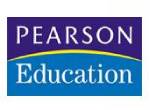Post Graduate Certificate in Critical Care Nursing
( PGCCCN )
❖ Unexpected response to therapies
Learning Objectives
At the end of this course, the learner will be able to:
1. Assess the client for unexpected adverse response to therapy (e.g., increased intracranial pressure, hemorrhage)
2. Recognize signs and symptoms of client complications and intervene
3. Promote the recovery of the client from unexpected response to therapy (e.g., urinary tract infection)
❖ Medical Emergencies
Learning Objectives
At the end of this course, the learner will be able to:
1. Apply knowledge of pathophysiology when caring for a client experiencing a medical emergency
2. Apply knowledge of nursing procedures and psychomotor skills when caring for a client experiencing a medical emergency
3. Explain emergency interventions to a client
4. Notify primary health care provider about unexpected client response/emergency
5. Perform emergency care procedures
6. Provide emergency care for wound disruption (e.g., dehiscence)
7. Evaluate and document the client's response to emergency interventions (e.g., restoring breathing, pulse).
❖ Establishing Priorities
Learning Objectives
At the end of this course, the learner will be able to:
1. Apply knowledge of pathophysiology when establishing priorities for interventions with multiple clients
2. Prioritize the delivery of client care
3. Evaluate plan of care for multiple clients and revise plan of care as needed
❖ Potential complications of Diagnostic tests/Treatment/Procedures
Learning Objectives
At the end of this course, the learner will be able to:
1. Assess client for an abnormal response following a diagnostic test/procedure (e.g., dysrhythmia following cardiac catheterization)
2. Apply knowledge of nursing procedures and psychomotor skills when caring for a client with the potential for complications
3. Monitor the client for signs of bleeding
4. Position the client to prevent complications following tests/treatments/procedures (e.g., elevate the head of the bed, immobilize extremity)
5. Insert, maintain, or remove a nasal/oral gastrointestinal tube
6. Insert, maintain, or remove a urinary catheter
7. Insert, maintain, or remove a peripheral intravenous line
8. Maintain tube patency (e.g., nasogastric tube for decompression, chest tubes)
9. Maintain percutaneous feeding tube
10. Apply and maintain devices used to promote venous return (e.g., anti-embolic stockings, sequential compression devices)
11. Use precautions to prevent injury and complications associated with a procedure or diagnosis
12. Provide care for a client undergoing electroconvulsive therapy (e.g., monitor airway, assess for side effects, teach the client about the procedure)
13. Intervene to manage potential circulatory complications (e.g., hemorrhage, embolus, shock)
14. Intervene to prevent aspiration (e.g., check nasogastric tube placement)
15. Intervene to prevent potential neurological complications (e.g., foot drop, numbness, tingling)
16. Evaluate responses to procedures and treatments
❖ Potential for Complications from Surgical Procedures and Health Alterations
Learning Objectives
At the end of this course, the learner will be able to:
1. Apply knowledge of pathophysiology to monitoring for complications (e.g., recognize signs of thrombocytopenia)
2. Evaluate the client's response to postoperative interventions to prevent complications (e.g., prevent aspiration, promote venous return, promote mobility)
3. Manage client during a procedure with moderate sedation
4. Manage client following a procedure with moderate sedation
5. Monitor and care for clients on a ventilator
AFFILIATED PARTNERS





